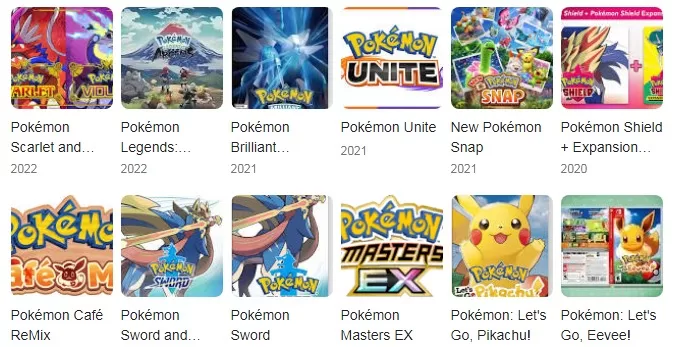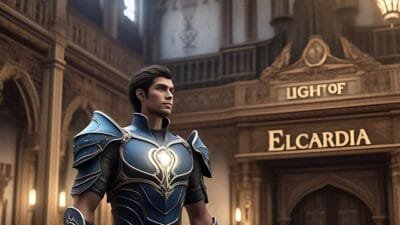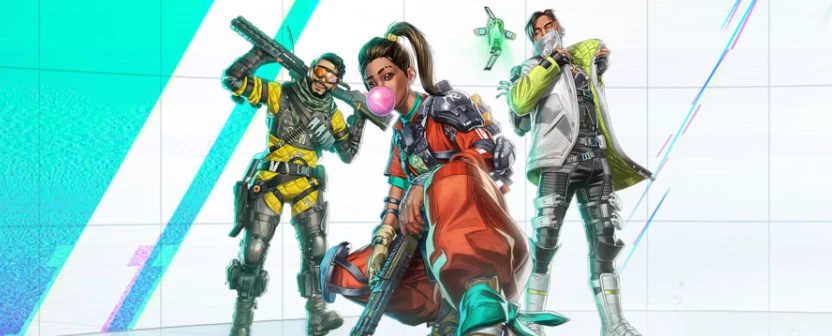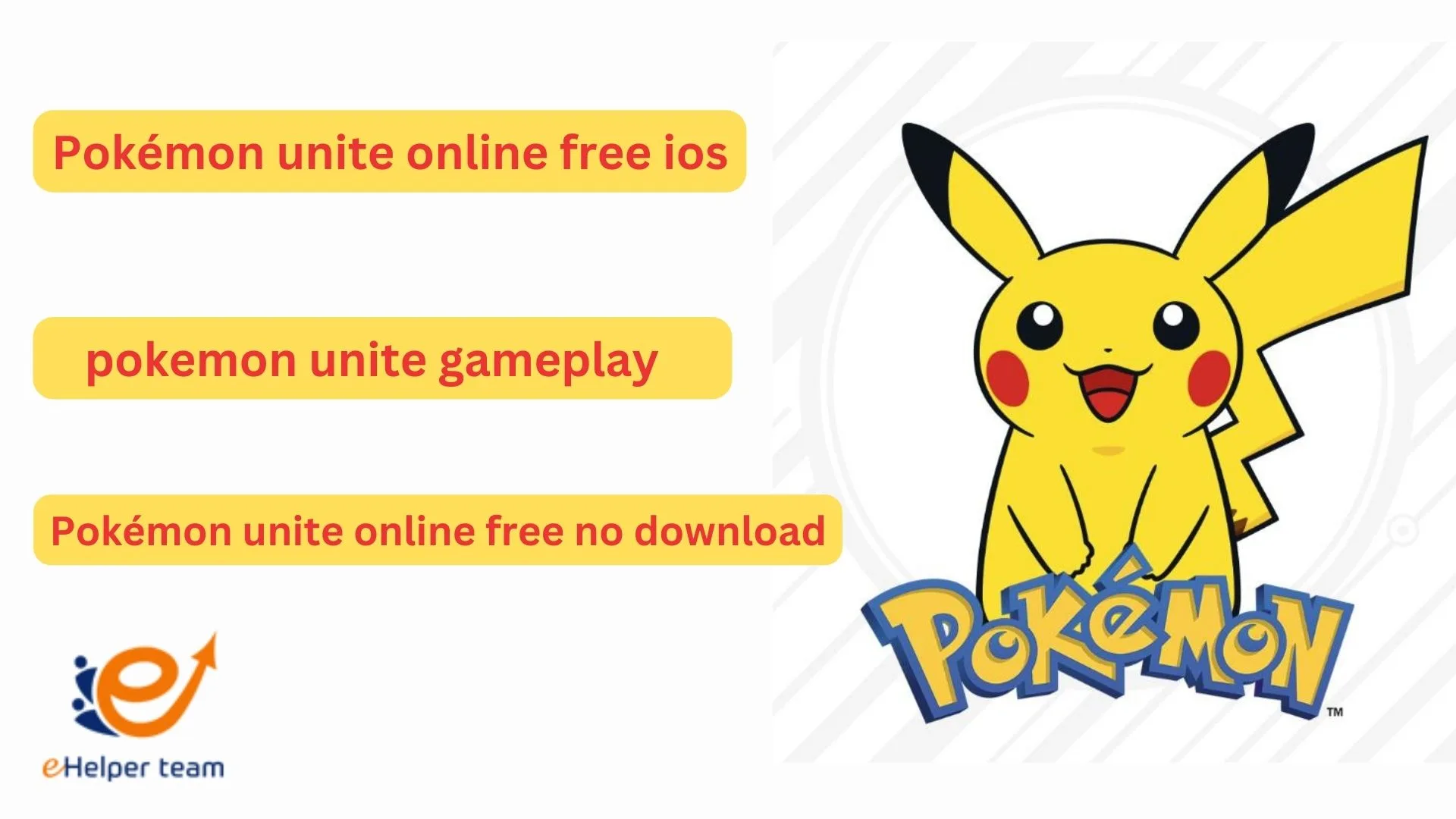Determining the “best” Pokémon game is subjective and depends on personal preferences. Each game in the series has its own unique features and gameplay, and what may be the best for one person may not be the same for another.
popular and critically acclaimed Pokémon games
However, here are some of the most popular and critically acclaimed Pokémon games:
- Pokémon HeartGold and SoulSilver (Nintendo DS)
- Pokémon Black and White (Nintendo DS)
- Pokémon Omega Ruby and Alpha Sapphire (Nintendo 3DS)
- Pokémon X and Y (Nintendo 3DS)
- Pokémon Sun and Moon (Nintendo 3DS)
- Pokémon Sword and Shield (Nintendo Switch)
These games offer different regions, Pokémon, stories, and gameplay mechanics. It’s best to research each game and its features to determine which one appeals to you the most.
Also : Pokémon UNITE online free
Here are the details, history, and features of each game in the order listed:
- Pokémon Red, Blue, and Yellow (1996) – These games were the first mainline Pokémon games and were released for the Game Boy. They allowed players to explore the Kanto region, catch 151 Pokémon, and battle other trainers.
- Pokémon Snap (1999) – This game was released for the Nintendo 64 and allowed players to take pictures of Pokémon in various locations.
- Pokémon Pinball (1999) – This game was released for the Game Boy Color and allowed players to play a pinball game with a Pokémon theme.
- Pokémon Gold and Silver (1999) – These games were released for the Game Boy Color and allowed players to explore the Johto region, catch 251 Pokémon, and battle other trainers. They also introduced new features such as a day/night cycle and breeding.
- Pokémon Crystal Version (2000) – This game was an updated version of Gold and Silver and introduced new features such as animated sprites, a Battle Tower, and the ability to play as a female character.
- Pokémon Puzzle League (2000) – This game was released for the Nintendo 64 and was a puzzle game featuring Pokémon characters.
- Pokémon Ruby and Sapphire (2002) – These games were released for the Game Boy Advance and allowed players to explore the Hoenn region, catch 386 Pokémon, and battle other trainers. They also introduced new features such as double battles and abilities.
- Pokémon Colosseum (2003) – This game was released for the Nintendo GameCube and allowed players to battle in 3D with Pokémon from Ruby and Sapphire. It also introduced the ability to catch and purify Shadow Pokémon.
- Pokémon FireRed and LeafGreen (2004) – These games were remakes of the original Red and Blue games and were released for the Game Boy Advance. They featured updated graphics, mechanics, and the ability to catch the then-latest generation of Pokémon.
- Pokémon Emerald (2004) – This game was an updated version of Ruby and Sapphire and introduced new features such as the Battle Frontier and the ability to catch both Team Aqua and Team Magma.
- Pokémon XD: Gale of Darkness (2005) – This game was a sequel to Colosseum and was released for the Nintendo GameCube. It allowed players to catch and purify Shadow Pokémon in a new region called Orre.
- Pokémon Ranger (2006) – This game was released for the Nintendo DS and allowed players to use a stylus to capture Pokémon and complete missions.
- Pokémon Diamond and Pearl (2006) – These games were released for the Nintendo DS and allowed players to explore the Sinnoh region, catch 493 Pokémon, and battle other trainers. They also introduced new features such as online connectivity and the ability to use the touchscreen to navigate menus.
- Pokémon Mystery Dungeon: Blue Rescue Team and Red Rescue Team (2006) – These games were released for the Nintendo DS and Game Boy Advance, respectively, and allowed players to play as a Pokémon and explore randomly generated dungeons.
- Pokémon Platinum (2008) – This game was an updated version of Diamond and Pearl and introduced new features such as the Distortion World and the Battle Frontier.
- Pokémon HeartGold and SoulSilver (2009) – These games were remakes of Gold and Silver and were released for the Nintendo DS. They featured updated graphics, mechanics, and the ability to follow the player character’s lead Pokémon around.
- Pokémon Black and White (2010) – These games were released for the Nintendo DS and allowed players to explore the Unova region, catch 649 Pokémon, and battle other trainers.

The second group of the best Pokémon games
Here is a more detailed breakdown of each of the listed Pokemon games, in the order that you provided:
- Pokémon Snap (1999): A spin-off game where players take on the role of a photographer tasked with capturing pictures of Pokemon in their natural habitats. The game is set on a rail system, with players taking pictures as they ride through various locations.
- Pokémon Pinball (1999): Another spin-off game, this time a pinball game featuring Pokemon. Players hit a ball around a pinball machine, trying to catch and evolve various Pokemon by hitting certain targets.
- Pokémon Stadium (1999): A battle-focused game that allowed players to transfer their Pokemon from the Game Boy games to the Nintendo 64 console. It featured 3D battles and a variety of challenges and minigames.
- Pokémon Gold and Silver (1999): The second generation of mainline Pokemon games, introducing 100 new Pokemon and several new features such as a day/night cycle, breeding, and more complex battle mechanics.
- Pokémon Crystal Version (2000): An enhanced version of Gold and Silver that added new features such as the ability to play as a female character and the Battle Tower, a challenging battle arena.
- Pokémon Ruby and Sapphire (2002): The third generation of mainline Pokemon games, introducing 135 new Pokemon and new features such as double battles and the ability to create secret bases.
- Pokémon Colosseum (2003): Another console-based Pokemon game, this one focused on battling and collecting shadow Pokemon, which had been artificially altered to be more powerful.
- Pokémon Diamond and Pearl (2006): The fourth generation of mainline Pokemon games, introducing 107 new Pokemon and new features such as online connectivity and the ability to create and customize a secret underground base.
- Pokémon Ranger (2006): A spin-off game where players take on the role of a Pokemon Ranger, capturing Pokemon by drawing circles around them with the DS stylus.
- Pokémon Platinum (2008): An enhanced version of Diamond and Pearl that added new features such as the Battle Frontier, an expanded post-game challenge, and new forms for several Pokemon.
- Pokémon HeartGold and SoulSilver (2009): Remakes of the second generation games Gold and Silver, adding updated graphics and features from later games such as the ability to have a Pokemon follow the player character.
- Pokkén Tournament (2015): A fighting game featuring Pokemon, developed in collaboration with the makers of Tekken. Players choose a Pokemon and battle against other Pokemon in a 3D arena.
- Pokémon GO (2016): A mobile game that uses GPS and augmented reality technology to allow players to catch Pokemon in the real world. It became a cultural phenomenon upon its release.
- Pokémon Sun and Moon (2016): The seventh generation of mainline Pokemon games, introducing 81 new Pokemon and new features such as Z-moves, powerful attacks that could only be used once per battle.
- Detective Pikachu (2016): A spin-off game featuring a Pikachu with the ability to speak and solve mysteries. The game was later adapted into a movie.
- Pokémon Ultra Sun and Ultra Moon (2017): Enhanced versions of Sun and Moon that added new features such as new forms for several Pokemon and a new story segment.
- Pokémon: Let’s Go, Pikachu! and Let’s Go, Eevee! (2018): Remakes of the first generation games Red and Blue, featuring updated graphics and mechanics from later games such as Pokemon GO-style catching.
- Pokémon Quest (2018): A mobile and Switch game featuring blocky, voxel-style graphics. Players explore a mysterious island and battle Pokemon using a simplified control scheme.
- Pokémon Sword and
sources
Here are some potential sources you can use to learn more about each game:
- Pokémon Sword and Shield – Official website: https://swordshield.pokemon.com/en-us/
- Pokémon Legends: Arceus – Official website: https://legends.pokemon.com/en-us/
- New Pokémon Snap – Official website: https://newpokemonsnap.pokemon.com/en-us/
- Pokémon HeartGold and SoulSilver – Bulbapedia: https://bulbapedia.bulbagarden.net/wiki/Pok%C3%A9mon_HeartGold_and_SoulSilver_Versions
pokémon game prices
Here are some estimated prices for some of the Pokemon games:
- Pokemon Sword and Shield: $60 (USD)
- Pokemon Legends: Arceus: $60 (USD)
- New Pokemon Snap: $60 (USD)
- Pokemon HeartGold and SoulSilver: $70-80 (USD)
- Pokemon Black 2 and White 2: $40-50 (USD)
- Pokemon GO: Free to download, with optional in-app purchases
- Pokemon Emerald: $40-50 (USD)
- Pokemon FireRed and LeafGreen: $40-50 (USD)
- Pokemon Y: $40-50 (USD)
- Pokemon Conquest: $30-40 (USD)
- Pokemon Brilliant Diamond: $60 (USD)
- Pokemon Puzzle League: $20-30 (USD)
- Pokemon Scarlet and Violet: Unknown at this time
- Pokemon Red, Blue, and Yellow: $10-20 (USD) on the Nintendo 3DS eShop
- Pokemon X and Y: $40-50 (USD)
- Pokemon Sun and Moon: $40-50 (USD)
- Pokemon Yellow: $10-20 (USD) on the Nintendo 3DS eShop
- Pokemon Black and White: $40-50 (USD)
- Pokemon: Let’s Go, Pikachu! and Let’s Go, Eevee!: $60 (USD)
- Pokemon Gold and Silver: $10-20 (USD) on the Nintendo 3DS eShop
- Pokemon Ultra Sun and Ultra Moon: $40-50 (USD)
- Pokemon Ruby and Sapphire: $40-50 (USD)
- Pokemon Platinum: $40-50 (USD)
- Pokemon Diamond and Pearl: $40-50 (USD)
- Pokemon Omega Ruby and Alpha Sapphire: $40-50 (USD)
- Pokken Tournament: $40-50 (USD)
- Pokemon Snap: $10-20 (USD) on the Nintendo 64 or Wii Virtual Console
- Pokemon Unite: Free to download, with optional in-app purchases
- Detective Pikachu: $40-50 (USD)
- Pokemon Stadium: $20-30 (USD) on the Nintendo 64
- Pokemon XD: Gale of Darkness: $40-50 (USD)
- Pokemon Cafe Mix: Free to download, with optional in-app purchases
- Pokemon Mystery Dungeon: $40-50 (USD)
- Pokemon Quest: Free to download, with optional in-app purchases
- Pokemon Ranger: $30-40 (USD)
As for store locations, the retailers mentioned earlier typically have physical stores across the United States and other countries. You can search for store locations near you by visiting their websites or using online mapping services. Keep in mind that availability and prices may vary depending on the store and location.
What Pokémon games are worth?
The value of Pokémon games can vary depending on a variety of factors such as the rarity of the game, its condition, and the demand for it. Generally, older and rarer games tend to have a higher value.
Here are some examples of approximate values for some Pokémon games:
- Pokémon Red/Blue/Yellow: $20 – $100 depending on condition and whether it’s the original release or a later re-release
- Pokémon Gold/Silver: $30 – $150 depending on condition and whether it’s the original release or a later re-release
- Pokémon Ruby/Sapphire: $30 – $200 depending on condition and whether it’s the original release or a later re-release
- Pokémon FireRed/LeafGreen: $40 – $200 depending on condition and whether it’s the original release or a later re-release
- Pokémon Emerald: $50 – $300 depending on condition and whether it’s the original release or a later re-release
- Pokémon Diamond/Pearl/Platinum: $30 – $150 depending on condition and whether it’s the original release or a later re-release
- Pokémon Black/White/Black 2/White 2: $30 – $100 depending on condition and whether it’s the original release or a later re-release
- Pokémon X/Y: $20 – $80 depending on the condition
- Pokémon Omega Ruby/Alpha Sapphire: $20 – $80 depending on the condition
- Pokémon Sun/Moon/Ultra Sun/Ultra Moon: $20 – $80 depending on the condition
It’s important to note that these values are approximate and can vary based on the factors mentioned earlier. It’s always a good idea to research current market prices and shop around to find the best deals. Additionally, the availability of these games at retail stores may be limited as some of them are no longer in production, so buying from online marketplaces or second-hand stores may be the only option.
Also: Why do millions of people care about Happy Pokémon Day?
What device do you need to play Pokémon?
The suitable device for playing Pokémon games depends on the specific game in question.
- For the main series games (e.g. Pokémon Sword and Shield, Pokémon Ruby and Sapphire), the devices you can play them on include:
- Nintendo Switch (for Pokémon Sword and Shield)
- Game Boy, Game Boy Color, and Game Boy Advance (for earlier generations of games)
- Nintendo DS and Nintendo 3DS (for later generations of games)
- For some spin-off games (e.g. Pokémon Go, Pokémon Café Mix), you can play them on mobile devices such as smartphones and tablets.
- For other spin-off games (e.g. Pokémon Stadium, Pokkén Tournament), you can play them on home consoles such as Nintendo 64, Wii U, and Nintendo Switch.
It’s important to check the specific system requirements for each game before purchasing to ensure that your device is compatible.
prices of devices
The prices of devices that can play Pokémon games can vary depending on the specific device and where you purchase it. Here are some examples of popular devices and their estimated prices:
- Nintendo Switch: $299 (base model) to $349 (new OLED model)
- Nintendo 3DS: $79 to $149
- iPhone or Android smartphone: $399 to $1,399 (depending on model and storage capacity)
As for stores, some popular retailers that sell these devices include:
- GameStop (https://www.gamestop.com/)
- Best Buy (https://www.bestbuy.com/)
- Target (https://www.target.com/)
- Walmart (https://www.walmart.com/)
- Amazon (https://www.amazon.com/)
These stores have physical locations across the United States, as well as online stores where you can purchase devices and have them shipped to you. It’s also worth noting that you may be able to find used devices for lower prices on sites like eBay (https://www.ebay.com/) or Facebook Marketplace (https://www.facebook.com/marketplace/). However, be sure to exercise caution when purchasing from individual sellers and read reviews before making a purchase.







